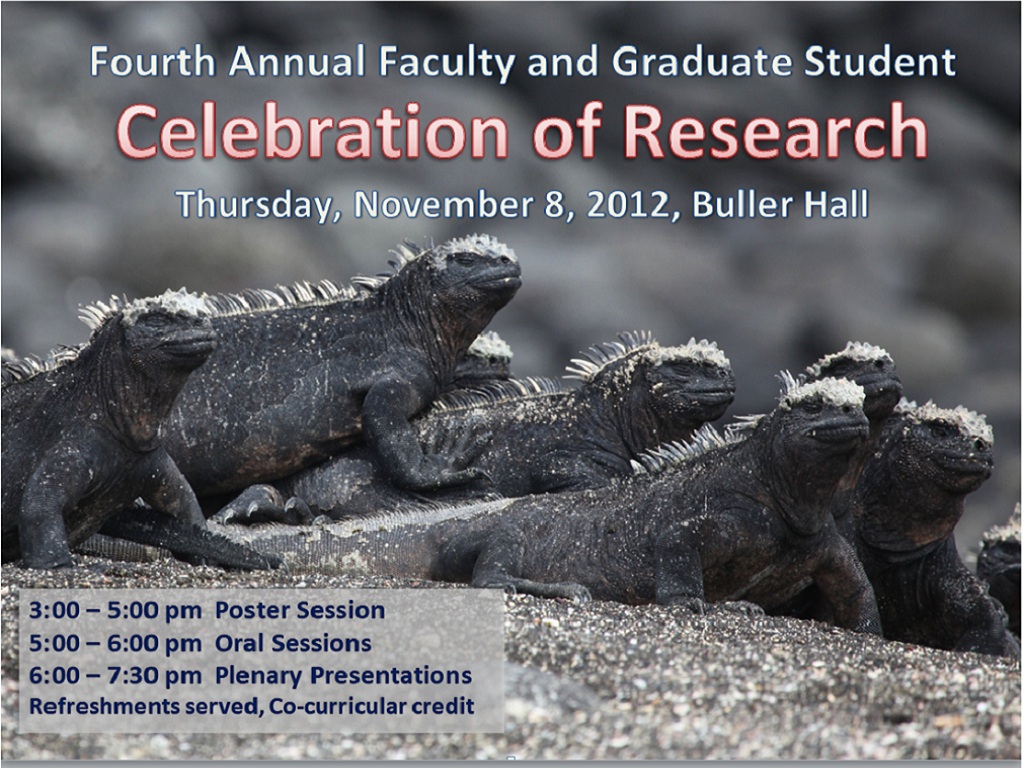Presentation Title
P-24 Stable Isotope Analysis of Incisor Enamel in Thirteen-lined Ground Squirrels (Ictidomys tridecemlineatus)
Presenter Status
Department of Biology
Second Presenter Status
Department of Biology
Third Presenter Status
Department of Earth and Planetary Science
Fourth Presenter Status
Undergraduate Student,Department of Biology
Location
Buller Hallway
Start Date
8-11-2012 3:00 PM
End Date
8-11-2012 5:00 PM
Presentation Abstract
We investigated stable-isotope profiles of incisor enamel from 8, well-referenced thirteen-lined ground squirrels (Ictidomys tridecemlineatus), using laser ablation coupled with gas chromatography–mass spectrometry. Stable isotope profiles were referenced to real time (cumulative dental growth record from mid-August to early May) based on known dates of events reflected in incremental dentin structure (entry into and exit from the hibernation season, fall injections of oxytetracycline). During late summer and fall, ∂13C of incisor enamel peaked between late August and mid September (individual peak values ranged from -3.7 to -1.9 ‰), with lower values before and after. Values of ∂13C were relatively low but variable during hibernation (≤ -9.6 ‰) and in the spring immediately after hibernation (≤ -11.0 ‰). Fall values of ∂18O were significantly and positively correlated with ∂13C for 5 of 8 squirrels. The roughly coordinated peak in ∂13C values in late summer across squirrels may indicate transient increase in the proportion of C4 plants (directly or indirectly via insects that feed on C4 plants), although this interpretation must be tested. Overall, our results indicate that fine-scale seasonal variation in paleo-diet and perhaps other paleoecological attributes might be reconstructed from incisors of fossil rodents.
P-24 Stable Isotope Analysis of Incisor Enamel in Thirteen-lined Ground Squirrels (Ictidomys tridecemlineatus)
Buller Hallway
We investigated stable-isotope profiles of incisor enamel from 8, well-referenced thirteen-lined ground squirrels (Ictidomys tridecemlineatus), using laser ablation coupled with gas chromatography–mass spectrometry. Stable isotope profiles were referenced to real time (cumulative dental growth record from mid-August to early May) based on known dates of events reflected in incremental dentin structure (entry into and exit from the hibernation season, fall injections of oxytetracycline). During late summer and fall, ∂13C of incisor enamel peaked between late August and mid September (individual peak values ranged from -3.7 to -1.9 ‰), with lower values before and after. Values of ∂13C were relatively low but variable during hibernation (≤ -9.6 ‰) and in the spring immediately after hibernation (≤ -11.0 ‰). Fall values of ∂18O were significantly and positively correlated with ∂13C for 5 of 8 squirrels. The roughly coordinated peak in ∂13C values in late summer across squirrels may indicate transient increase in the proportion of C4 plants (directly or indirectly via insects that feed on C4 plants), although this interpretation must be tested. Overall, our results indicate that fine-scale seasonal variation in paleo-diet and perhaps other paleoecological attributes might be reconstructed from incisors of fossil rodents.



